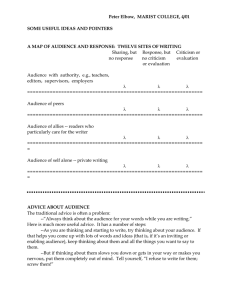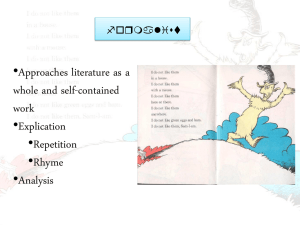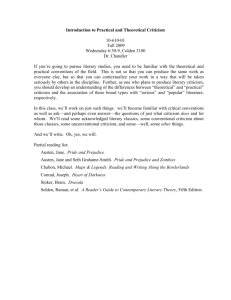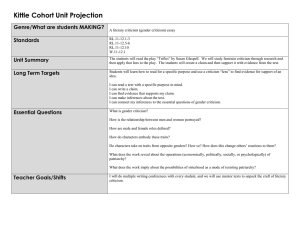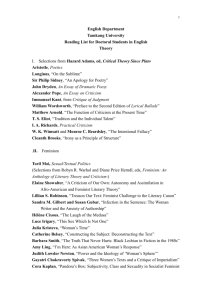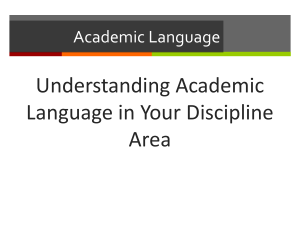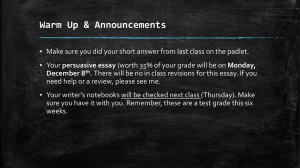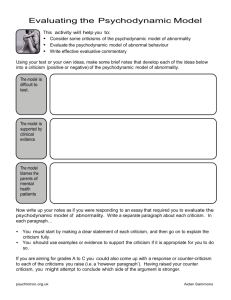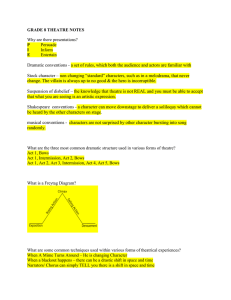Classroom Management: Avoiding the Criticism Trap
advertisement
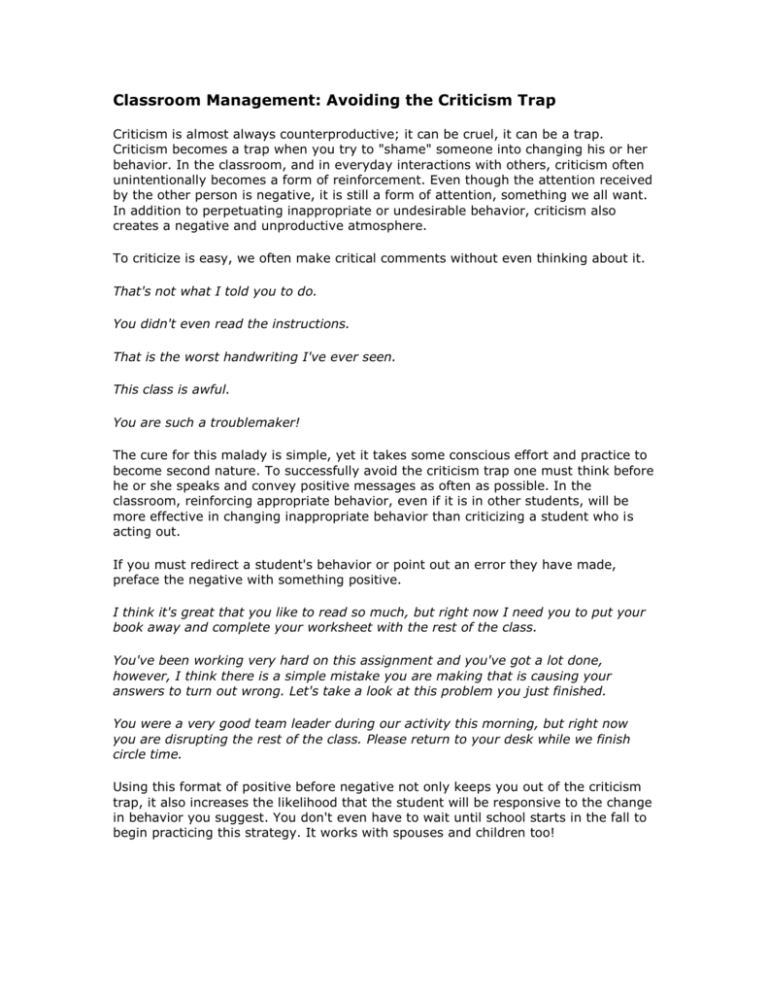
Classroom Management: Avoiding the Criticism Trap Criticism is almost always counterproductive; it can be cruel, it can be a trap. Criticism becomes a trap when you try to "shame" someone into changing his or her behavior. In the classroom, and in everyday interactions with others, criticism often unintentionally becomes a form of reinforcement. Even though the attention received by the other person is negative, it is still a form of attention, something we all want. In addition to perpetuating inappropriate or undesirable behavior, criticism also creates a negative and unproductive atmosphere. To criticize is easy, we often make critical comments without even thinking about it. That's not what I told you to do. You didn't even read the instructions. That is the worst handwriting I've ever seen. This class is awful. You are such a troublemaker! The cure for this malady is simple, yet it takes some conscious effort and practice to become second nature. To successfully avoid the criticism trap one must think before he or she speaks and convey positive messages as often as possible. In the classroom, reinforcing appropriate behavior, even if it is in other students, will be more effective in changing inappropriate behavior than criticizing a student who is acting out. If you must redirect a student's behavior or point out an error they have made, preface the negative with something positive. I think it's great that you like to read so much, but right now I need you to put your book away and complete your worksheet with the rest of the class. You've been working very hard on this assignment and you've got a lot done, however, I think there is a simple mistake you are making that is causing your answers to turn out wrong. Let's take a look at this problem you just finished. You were a very good team leader during our activity this morning, but right now you are disrupting the rest of the class. Please return to your desk while we finish circle time. Using this format of positive before negative not only keeps you out of the criticism trap, it also increases the likelihood that the student will be responsive to the change in behavior you suggest. You don't even have to wait until school starts in the fall to begin practicing this strategy. It works with spouses and children too!
